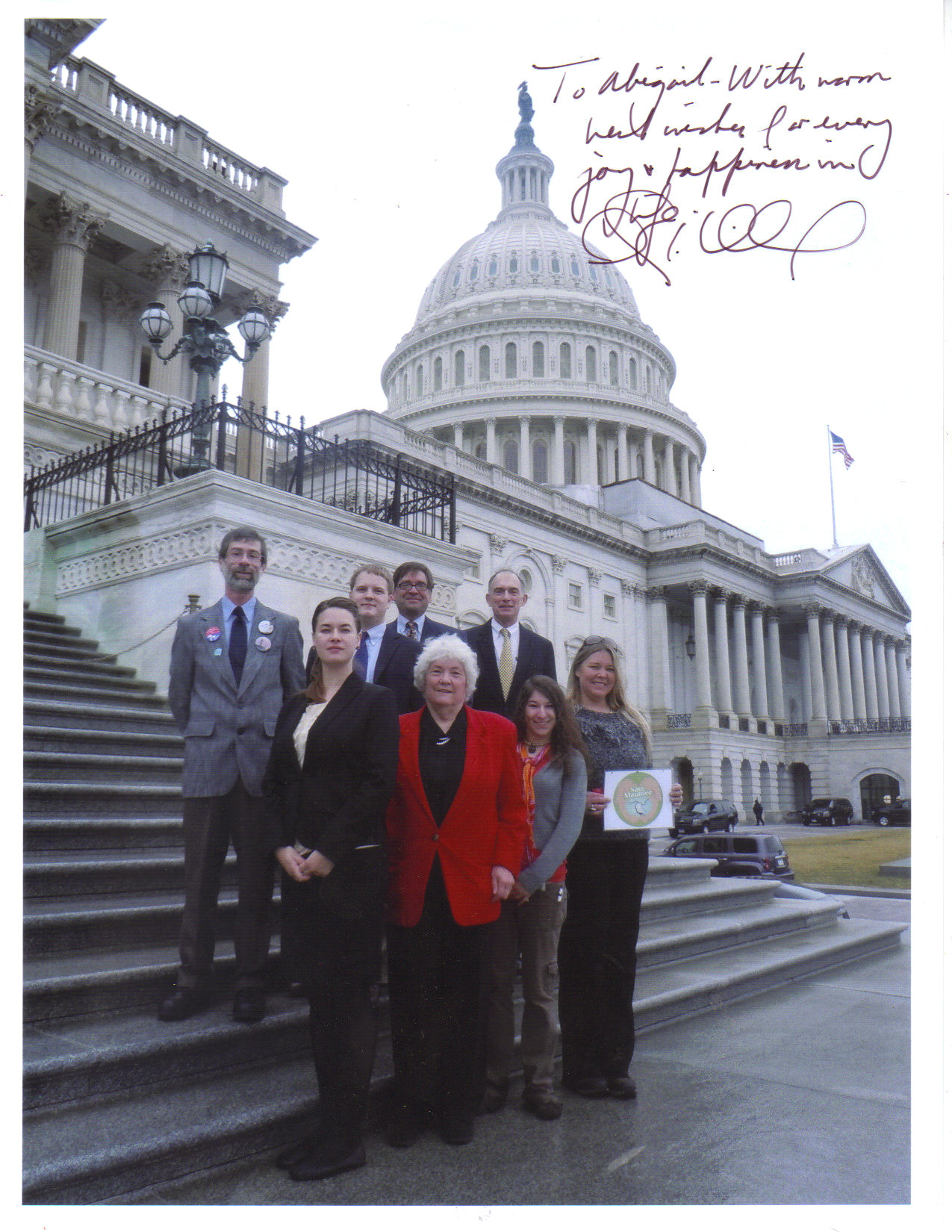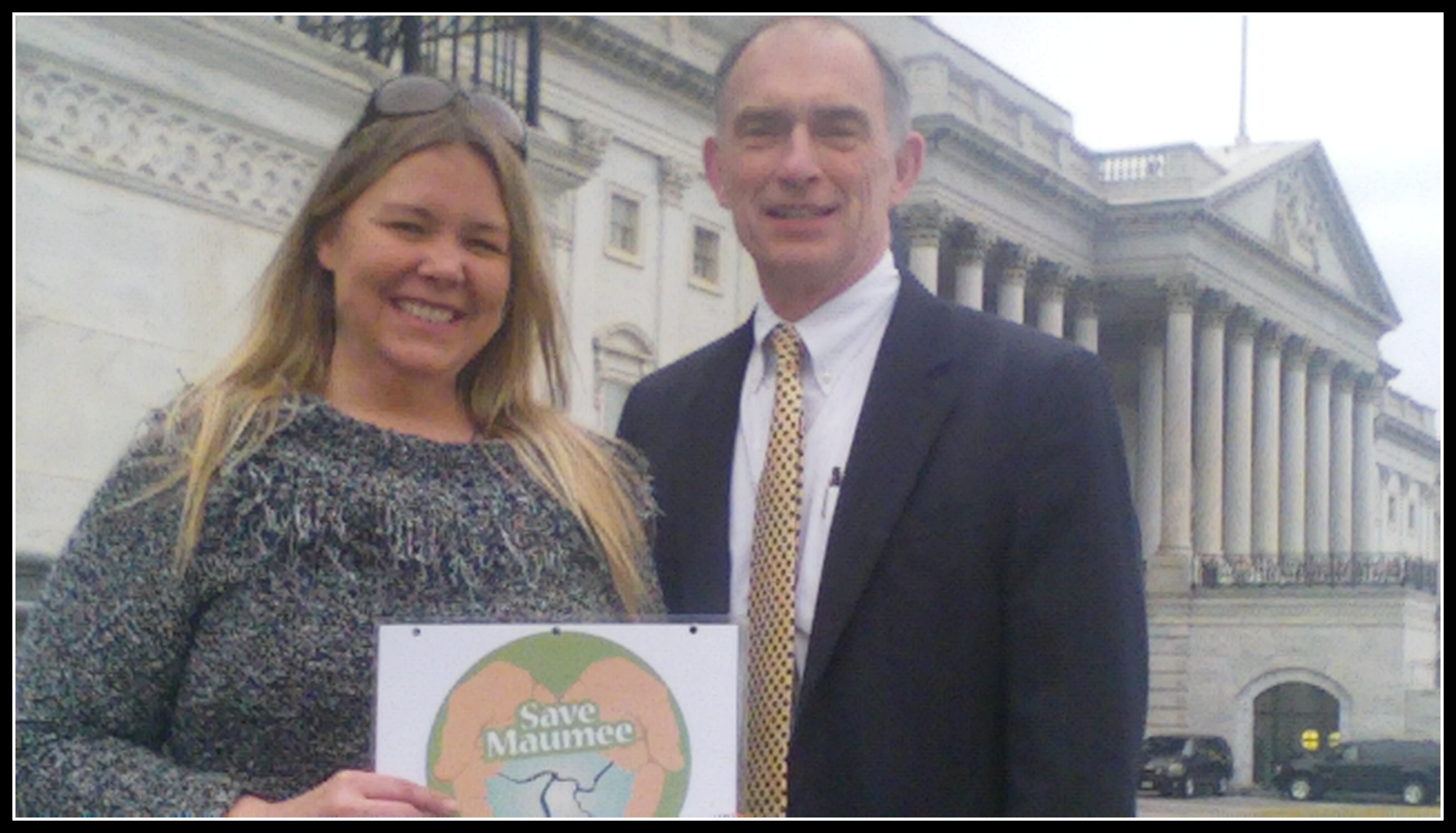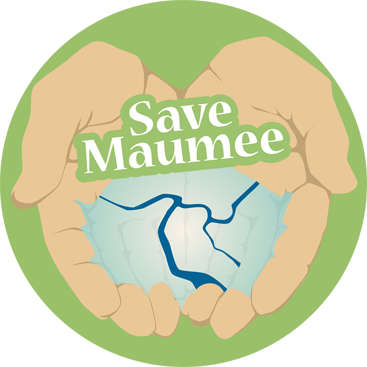Written by Sean Musi
V161
�
I have spent half of my life in Fort Wayne, Indiana and the number one issue that comes to mind involving the environment is the poor condition of our water ways. This is especially upsetting because the city seems to take some pride in the fact that three rivers meet in it and even have a large week-long festival named after it, Three Rivers.
My mind went straight to a presentation given by a local grassroots project while I was studying at my previous college in Fort Wayne. Abigail Frost, founder of Save Maumee Grassroots Movement, spoke about her current efforts as well as how these three bodies of water came to be as unpleasant as they are today.
The St. Joe River is where over 200,000 people get their drinking water. This meets the St. Marys and both then flow together to create the Maumee. The St. Marys, which floods frequently and is highly polluted, passes through much of northeast Indiana. These two rivers come together to form the Maumee, which contains high levels of mercury, PCB and E. coli.,fish consumption advisories, as well as the accumulation of sediment and garbage. The Maumee just so happens to be the longest and largest contributing river to the Great Lakes (Frost).
The Maumee has been polluted since before January of 1975, which is when the EPA conducted an investigation on it as well as the section that passes through the Toledo area(Water). The legal release of pollutants by 38 industrial contributors has taken a toll on the health of these rivers. The Indiana Department of Environmental Management has been criticized because of its inability to enforce when these regulations are violated (Frost).
Another contributing factor is the outdated and degrading status of the sewer system. Combined sewer overflows (CSOs) take storm water runoff, sewer discharge, and industrial waste to all be processed at a water treatment facility. With heavy rainfall or snowmelt thesesystems are designed to overflow into nearby streams, rivers or bodies of water when capacity is exceeded. In Fort Wayne this can happen when 0.1 inches of rain falls. On average this amount of rain is produced 71 days out of the year. In 2006 it happened every 2.4 days. These overflows mean that one billion gallons of raw sewage are being dumped into the rivers each year (Frost).
As mentioned before the Maumee is the longest and largest contributing stream to the Great Lakes. This means that the pollution of this river has a negative impact on all the communities and wildlife from Fort Wayne to the Great Lakes. The Three Rivers Festival used to have a Raft Race and there also used to be a beach at the Johnny Appleseed Park, but because of excessive pollution are now unfeasible (Frost). This takes away additional revenue these activities may have produced for the city or local businesses as well as a uniqueness that may have made the city an attractive place to live or visit. Boating enthusiasts as well as fishermen are deterred from using these waterways for their recreation due to their poor condition, adding to the negative economic effects as well as social effects. Indiana University Purdue University Fort Wayne (IPFW) is situated on the bank of the St. Joe River. They have recently constructed a beautiful bridge for pedestrian and bike traffic to the soccer fields on the other side of the river.However, the poor quality of the water than runs under this bridge could potentially have a negative effect on the likelihood of a student or student athlete deciding to attend this college. Thus losing tuition money as well as revenue this athlete may have produced. Elite professors and or students deciding not to come to this school because of the poor environmental aesthetics may hinder the chances that IPFW makes a household name of itself. This snowballing effect can all this could be traced back to a series of polluted rivers.
There are solutions to help prevent or eliminate the number of overflows a city can take that has a combined system. The first is to modify the existing system to separate the wastewater from the runoff water. The city of Minneapolis is aggressively pursuing this solution to their CSOs. Separation started in the 1960s and CSOs are rare compared to other cities. Remaining combined sewers are still in place there due to the difficulty and expenses to separate them. Part of this problem is up to the home or business owner. If built prior to 1961 many structures have piping that runs off the roof and directly into the sanitary sewer system. Redirecting this water onto grade or to a storm drain on the street are the primary solutions (Minneapolis).
Another avenue of solutions leans more toward urban forestry. Riverkeeper, a member-supported watchdog organization, has also addressed the problem with CSOs that discharge into New York Harbor. More than 27 billion gallons of raw sewage and polluted stormwaterdischarge out of 460 combined sewage overflows (CSOs) into New York Harbor alone each year (Riverkeeper). This organization proposes implementing green streets, street trees, green roofs and rain barrels. Green streets are areas that use vegetated facilities to manage stormwaterat its source. If applied in New York City it could reduce CSOs by 14,800 gallons. Implementing street trees could reduce an additional 13,170 gallons of water from CSO systems.Another way is through green roofs, reducing 800 to potentially 12,000 gallons. Utilizing rain barrels can subtract 9,000 gallons (Riverkeeper).
Seeing how these rivers are intricately connected to the city of Fort Wayne as well as all the communities to the Great Lakes calls for immediate action, especially Fort Wayne. Being the Summit City all the poor environmental practices carried out here will unfairly punish communities who may be carrying out safe methods. Fixing this problem has nothing but good outcomes for all. Cleaner rivers where those 200,000 people get their water increases their health as well as that of the environment. Cleaning these rivers may also add to the attractiveness of the city and add population growth, industry growth and overall prosperity.
Like all policies there will be consequences of implementing them and these proposed solutions to CSOs present no exception. There will certainly be a cost associated with change, either through reconstruction and separation of the sewage system or by introducing urban forestry to the area or a combination of the two. This issue can be met with a costs and benefits presentation that shows how the city will benefit from this policy. Visual outcomes will be cleaner looking rivers as well as a return to river recreation, should the other problems associated with the river be resolved as well. Also expected is resistance from citizens as well as officials who will have to pay monetary costs as well as comfort and convenience costs that this policy will forfeit during the time of construction and implementation. Then the obvious expected outcome is the stated policy objective which is a lower number if not a complete eradication of overflows into local rivers.
There is the possibility of unexpected outcomes occurring but if carried out properly they will be few. With the urban forestry approach there could be complications with tree roots. They have been known for damaging sidewalks, sewer systems and other manmade structures. Extraresearch will need to be conducted to assure the buildings can carry the extra weight the vegetation, soil and water that will be added to them. Normally this weight would not exist because the plants do not exist and rain or snow fall runs off the roofs and gutters. Also if not situated properly there could be the possibility of damage done to nearby areas to falling trees in the event of a storm.
There is also a positive unanticipated effect towards implementing more trees into an area. More trees and vegetation will increase the quality of the air, which in the long run may increase health of the populace by eliminating causes of disease and sickness. Incorporating more vegetation will also create an aesthetically pleasing effect for the area and may make it more attractive towards visitors and tourists. This in turn may unknowingly increase sales in the immediate area.
With the separation of the current combined sewer system the project company as well as the city must be ready for the inconveniences. For instance traffic may increase where construction is being carried out. There is also the possibility that accidents happen that damage the existing infrastructure creating unintentional flooding or ground cave ins. With the separation of the storm from sewage water also creates an unintended negative side effect. All the storm water that collects oil, chemicals and other pollutants will head directly toward local rivers.There are measures limit or prevent this from happening. At high traffic areas of storm water entering bodies of water there have been filter systems that capture many impurities. These must be tended to often however to remain effective (Tolliver).
There is also a positive side effect towards the separation of the system. The cleaning process will use fewer chemicals, such as chlorine and aluminum sulphate, to process the lower volumes of water that would travel through the plant.
As far as tradeoffs between the current and proposed policies it is basically a one sided argument. Apart from having both storm water and sewage water being processed equally there is no benefit now for the combined sewer system. At one time it was considered breakthrough technology but as the city of Fort Wayne grew it frequently overwhelmed the system.
With a population of over 200,000 and average precipitation of 38.3 inches per year, it is unreasonable to have a combined sewer system in place (What). On average there are 71 times a year where the combined system overflows sending one billion gallons of raw sewage into the rivers every year. After conducting research for this project I have found that Fort Wayne plans to make the transition from combined to separate systems over the course of the next fifteen years. When completed they have predicted that the chances of overflows will go from 71 times a year to 4 (Long). The remaining overflows could be eliminated by incorporating urban forestry into the infrastructure of the city. Some of this can be done by volunteers by planting trees in parks or other open areas. More complicated projects such as green buildings and green streets will most likely be handles by professionals.
Transitioning from the combined to separate system can be carried out simultaneously with the urban forestry, so long as the budget and resources of the city permit it. This combination of policies will improve water quality, aesthetics of the environment, air quality andadd to a continually decrease in the environment and many more snowballing positive outcomes with little to no risk.
Works Cited
“Combined Sewer Overflow – A Minneapolis Solution.” City of Minneapolis, Minnesota – Official Web Site. Web. 17 Nov. 2011. <http://www.ci.minneapolis.mn.us/cso/>.
“Combined Sewage Overflows (CSOs) | Riverkeeper.” Riverkeeper – NY’s Clean Water Advocate. 2009. Web. 17 Nov. 2011. <http://www.riverkeeper.org/campaigns/stop-polluters/sewage-contamination/cso/>.
“EPA Combined Sewer Overflows – Office of Wastewater Management.” U.S. EPA ColdFusion Server. Environmental Protection Agency. Web. 17 Nov. 2011. <http://cfpub.epa.gov/npdes/home.cfm?program_id=5>.
Frost, Abigail. Save Maumee – Index. Abigail Frost, 2005. Web. 24 Oct. 2011. <http://savemaumee.org/>.
“Long Term Control Plan Chapter 4.” City of Fort Wayne Indiana. 2007. Web. 14 Nov. 2011.
<http://www.cityoffortwayne.org/utilities/images/stories/docs/ltcp/chapter_4.pdf>.
Toliver, Aaron. Personal Interview. 16 Nov. 2011.
“Water Pollution Investigation: Maumee River and Toledo Area.” EPA United States Environmental Protection Agency.Environmental Protection Agency. Web. 17 Nov. 2011. <http://nepis.epa.gov/Exe/ZyNET.exe/20009SDZ.TXT?ZyActionD=ZyDocument>.







 Rain and snowmelt discharged from combined stormwater and sewer systems can cause serious pollution in rivers and lakes in urban areas. These sewer systems were designed to capture and treat both domestic wastewater as well as stormwater runoff. But in many places development has increased beyond the capacity of combined sewer systems which causes them to periodically overflow, sending raw sewage into surface water bodies (combined sewer overflows). In areas where stormwater drains were never connected with the sanitary sewer system, raw sewage overflows can result from substantial amounts of water leaking into old pipes, pipe blockages, pipe breaks, power failures or insufficient capacity in the system. Such overflows are called sanitary sewer overflows.
Rain and snowmelt discharged from combined stormwater and sewer systems can cause serious pollution in rivers and lakes in urban areas. These sewer systems were designed to capture and treat both domestic wastewater as well as stormwater runoff. But in many places development has increased beyond the capacity of combined sewer systems which causes them to periodically overflow, sending raw sewage into surface water bodies (combined sewer overflows). In areas where stormwater drains were never connected with the sanitary sewer system, raw sewage overflows can result from substantial amounts of water leaking into old pipes, pipe blockages, pipe breaks, power failures or insufficient capacity in the system. Such overflows are called sanitary sewer overflows.